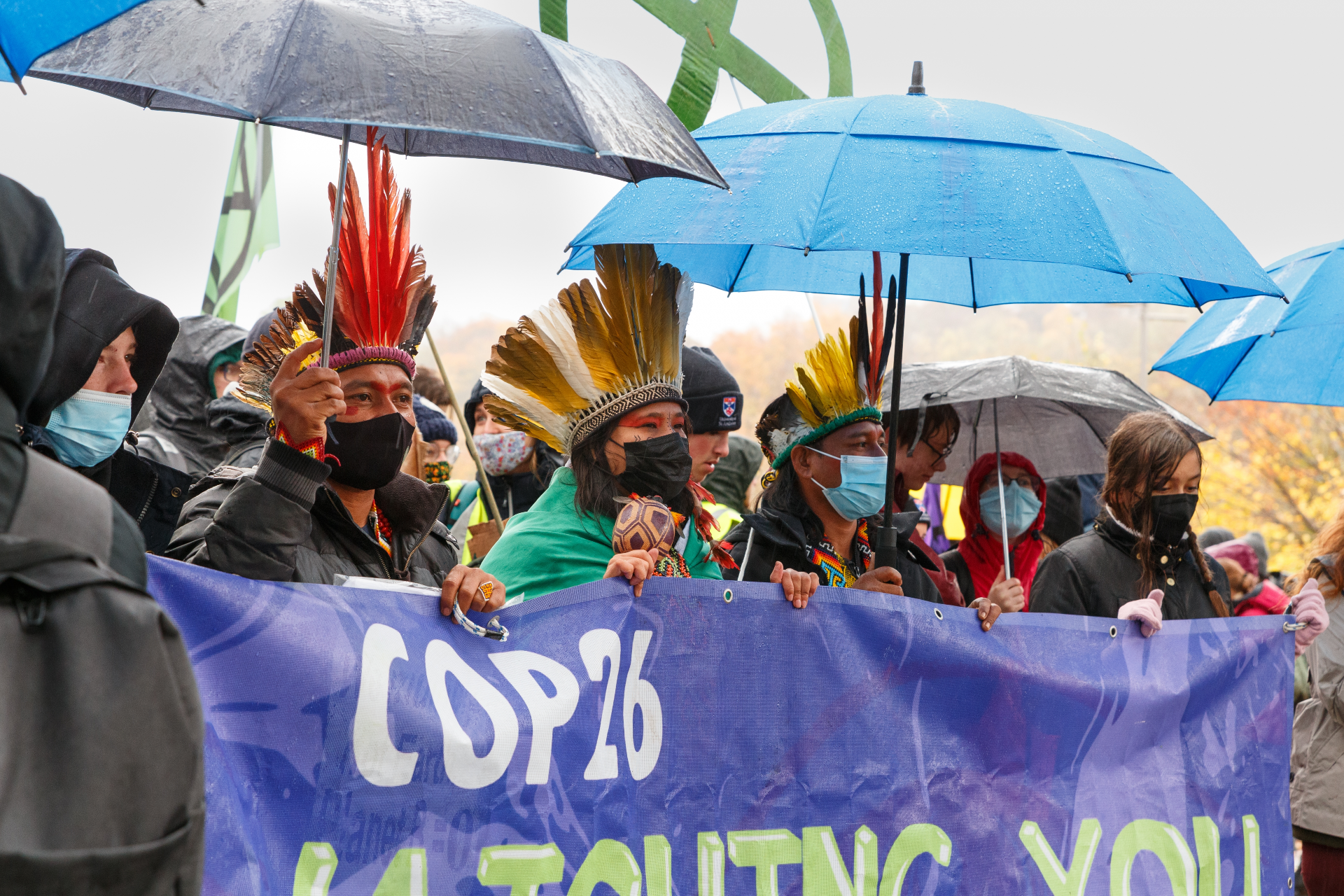2022-10-20
A new report looks at how donor support for indigenous and local communities, set to reach unprecedented levels, can be more focused, flexible, and accessible.
Last year at the United Nations COP26 global climate summit, several countries and private donors pledged nearly $2 billion to support and secure land and forest rights for Indigenous Peoples and local communities.
The announcement was met with great fanfare but a year after it came there is a sense of frustration among some indigenous and local communities who have yet to see these funds materialize or hear if they are even eligible to receive them.
“The recognition of our own capacity is essential,” Joseph Itongwa Mukumo, coordinator of the Indigenous Peoples and Local Network for the Management of Forest Ecosystems of Central Africa (REPALEAC), said during a recent webinar on the topic that was hosted by the Rights and Resources Initiative along with the Forest Tenure Funders Group.
Itongwa Mukumo and others said the massive pledge, which promised increased and more direct funding to Indigenous Peoples and local communities, was a step in the right direction.
However, he added that organisations still have a lot of questions about the status of the funds as well as how and when they will be dispersed. “Our communities are waiting for this to become a reality,” he told the online seminar.
In addition to this, of the global funding for tenure and forest projects between 2011 and 2020 just a faction of it was given directly to organisations led by indigenous and local groups.

So, to change that a report published from Rights and Resources Initiative and Rainforest Foundation Norway proposes donors make their funding more “fit for purpose” – by tailoring and focusing their support to indigenous or local community-led groups and by ensuring what is given is flexible, long-term, gender-inclusive, timely and accessible, and mutually accountable.
“Securing and protecting the tenure rights of Indigenous Peoples and local communities is one of the most cost-effective, equitable, and efficient means of protecting, restoring, and sustainably using tropical forestlands and the ecosystems they provide,” said Torbjørn Gjefsen, a senior policy adviser for the climate at Rainforest Foundation Norway.
The report urges donors to start by forging strong, at-scale relationships with Indigenous Peoples and local community organisations as well as with trusted intermediaries that regularly collaborate with these groups.
Other steps donors can take include letting recipients quickly redirect resources as they see fit, incorporating a gender-inclusive perspective into existing projects, and removing administrative barriers for funding when possible.
Donors, in particular private foundations, should also provide higher levels of transparency and accountabilityon their funding and priorities. Doing so, the report says, would give leaders of Indigenous Peoples and local communities a better understanding of the size of donor support and in what direction it is heading.
Adopting these changes outlined in the report could greatly improve land tenure for Indigenous and local communities. Yet members of these communities stressed how more is needed than just money to help them maintain and sustain their lands.
Margarita Antonio Matamoros, a Miskitu Indigenous woman from Nicaragua and Program Coordinator of the AYNI Indigenous Women’s Fund at the International Forum on Indigenous Women, said groups need to know they are not alone in their fight.
“It is not just your money; we need you,” she told the webinar. “We need you to use all your strength, your knowledge, and your capacity to stop the evil forces that pay for the guns to expand mining, deforestation, and land grabbing in our homelands.”
Articles